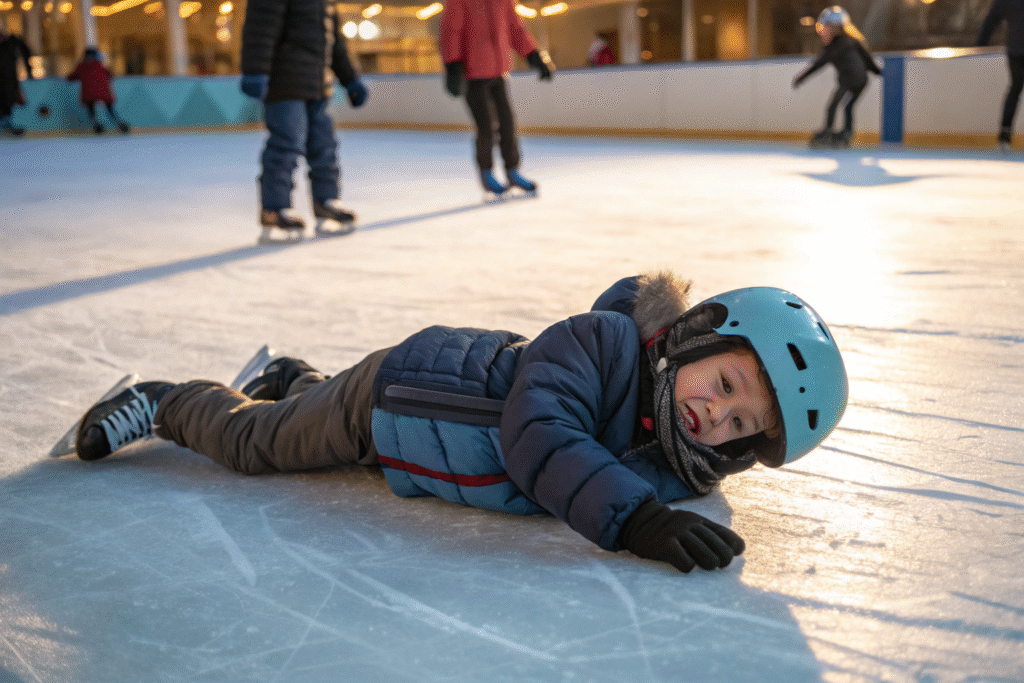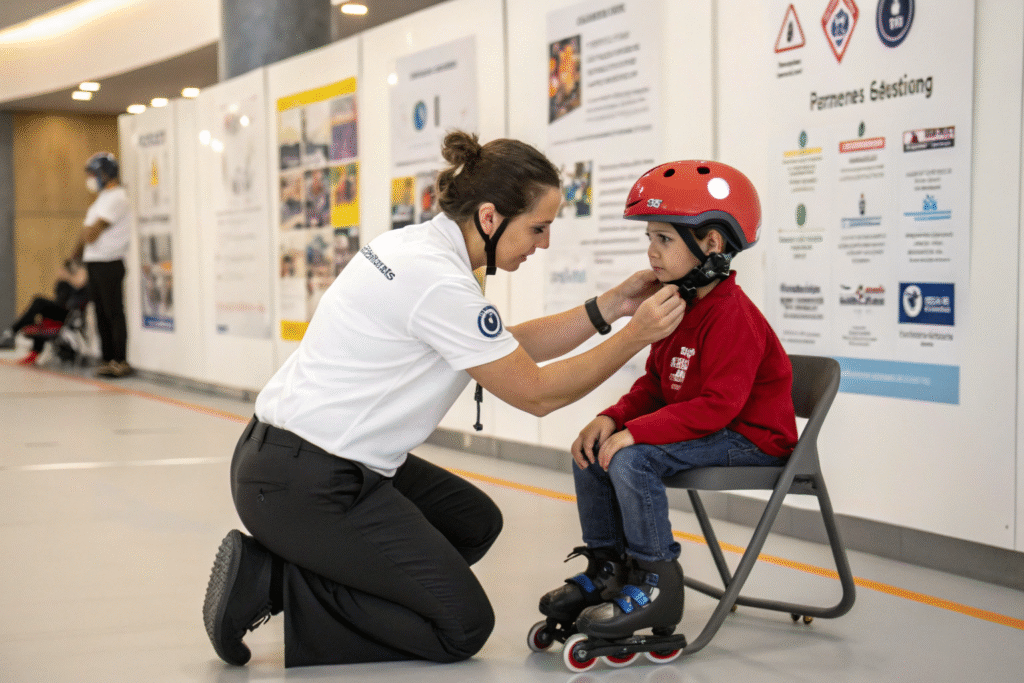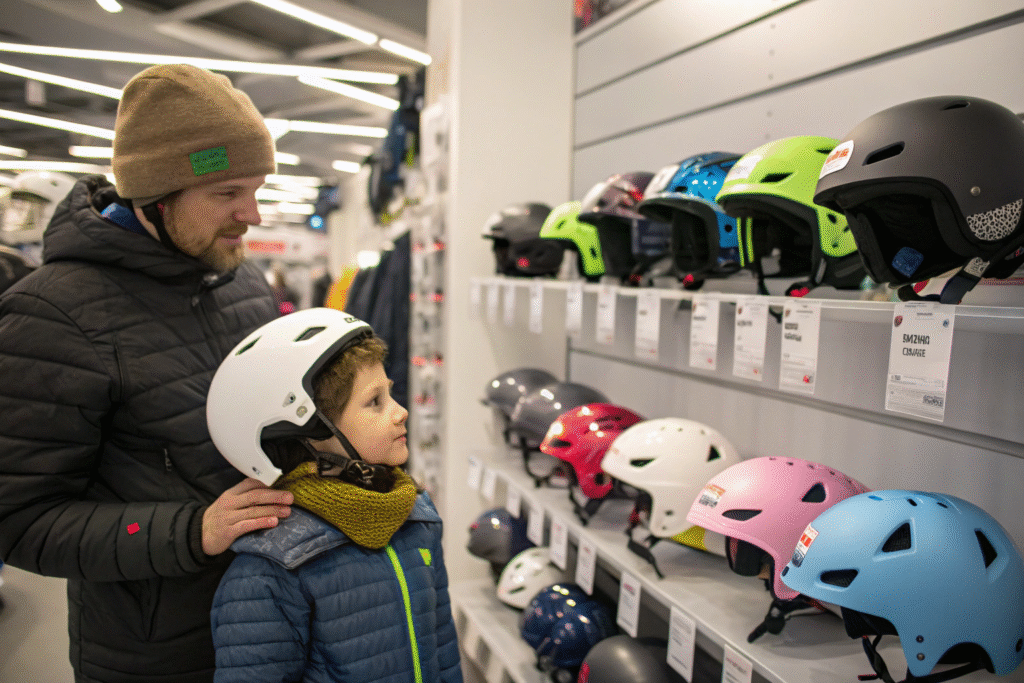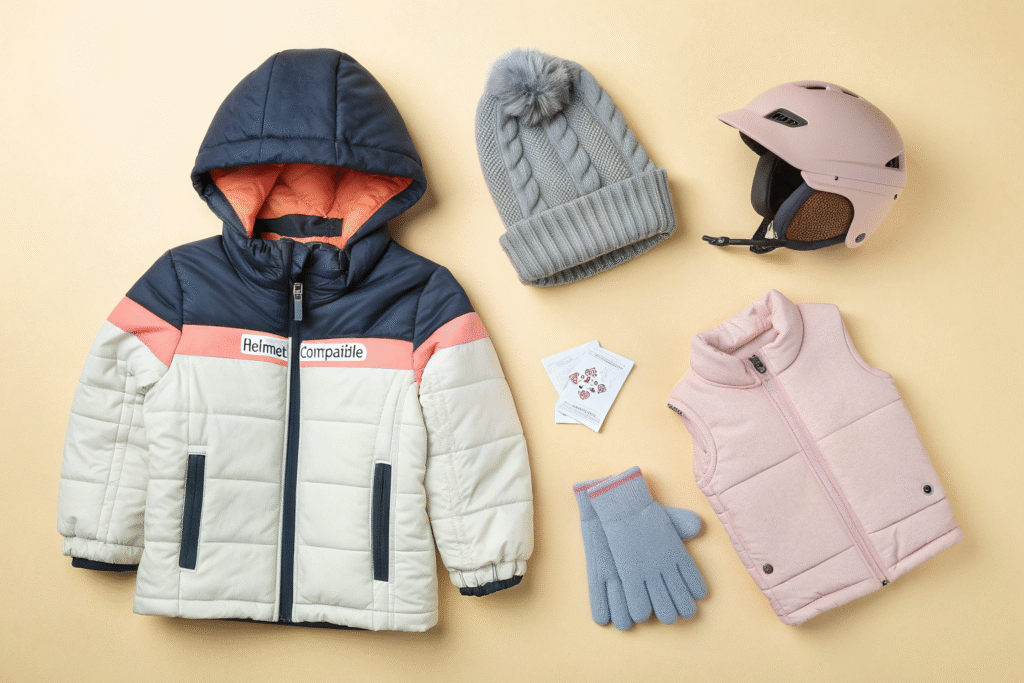Ice skating can be magical for kids—but as a parent or buyer in the children’s apparel space, one question always comes up: should kids wear helmets on the ice?
Yes—helmets are essential for children ice skating, especially beginners. They protect against serious head injuries and build confidence during falls.
Whether you sell winter clothing or are just a safety-conscious parent, understanding the need for proper protection—like certified helmets—can make skating both fun and safe. As a kidswear manufacturer, I often advise our brand clients to consider helmet-compatible clothing in their designs.
Why is a helmet important for child skaters?
Many parents assume skating is harmless fun. But even on smooth indoor rinks, a simple backward fall can lead to serious concussions. Children under 10 are particularly at risk due to their developing motor skills.
A helmet dramatically reduces the risk of traumatic brain injury during falls, making it a non-negotiable piece of gear for beginner skaters.

How do helmets reduce ice skating injuries?
When a child falls backward—which is common during skating—the impact force can cause a skull fracture or concussion. Studies from Skate Canada show that properly fitted helmets cut head injury risks by nearly 70%. Helmets designed for ice sports often have side and rear coverage to better protect against backward falls.
Organizations like Parachute Canada recommend CSA-certified multi-impact helmets for children under 12. These certifications ensure real-world impact testing—not just lab assumptions.
Are certain helmets better than others for skating?
Absolutely. Bicycle helmets may offer some protection but aren’t ideal. Look for CSA, ASTM, or HECC-certified helmets meant for ice hockey or skating. Brands like Bauer and Giro produce youth helmets with adjustable sizing, airflow, and fleece liners.
We often help kidswear brands design helmet-compatible hoods or collars for seamless wear. That includes wider neck openings, non-bulky hoods, and flat seams.
What do health and safety authorities recommend?
National pediatric associations and injury prevention groups are clear: helmets save lives. Countries with safety mandates for ice sports have seen injury rates fall significantly.
Authorities like the American Academy of Pediatrics and Health Canada strongly recommend helmets for all children skating, regardless of skill.

What are the official age and usage guidelines?
The American Academy of Pediatrics (AAP) advises that children under 6 always wear a helmet during ice skating. In some Canadian provinces, it’s required by law until age 12. The U.S. Centers for Disease Control also encourages helmet use at public rinks.
These agencies emphasize not only injury prevention but modeling good behavior. When older skaters wear helmets, younger ones follow.
Do skating schools enforce helmet use?
Many now do. Rink programs like Learn to Skate USA require children in beginner levels to wear helmets. Some provide rentals, but parents are encouraged to bring their own for proper fit and hygiene.
We’ve collaborated with skating academies in the U.S. to design uniforms that integrate easily with helmets—using zip-down turtlenecks and flat-backed hoods to reduce helmet interference.
How can parents choose the right helmet for skating?
Choosing a helmet might seem simple, but poor fit or the wrong type can defeat the purpose. I often help our brand clients include helmet guidance in their product packaging or websites.
Parents should select helmets that are age-appropriate, certified for skating, and snug without causing discomfort.

What should buyers look for in certification and fit?
First, check for certification labels: CSA, ASTM F1447, or HECC. Avoid novelty helmets or those without safety labels. Proper fit is equally vital—a helmet should sit just above the eyebrows and not tilt back.
Retailers like Dick's Sporting Goods and REI now carry a full range of skating-specific helmets for toddlers and older kids.
How often should helmets be replaced?
Most multi-impact helmets last about five years, or sooner if damaged. After a hard fall, even if cracks aren’t visible, the foam may have compressed internally. Replace immediately if your child complains of headaches or poor fit.
We recommend buyers include usage and replacement instructions with their safety gear, and some of our B2B clients even bundle helmets with their kidswear winter packages.
How to integrate helmet safety into kidswear design?
As a manufacturer, I’ve learned that winter gear must work with helmets, not against them. A bulky hood or stiff collar can push a helmet forward, affecting visibility and safety.
Thoughtful design features like flat-backed hoods, stretch fabrics, and slim collars can encourage helmet use without compromising comfort or style.

What design features make helmets easier to wear?
We’ve helped brands use V-shaped collars that sit under helmet straps without bulging. Materials like Polartec offer warmth with flexibility. Thin beanies made from merino wool or fleece can sit under helmets without affecting fit.
Even small details—like chin guard coverage, snap-off hoods, or magnetic closures—help parents dress kids quickly while ensuring helmet safety.
How do you market helmet-ready winter collections?
For our U.S. and EU clients, we often create product tags reading “helmet-compatible” or “skate-ready.” That draws attention from safety-focused parents. Use your product descriptions to explain compatibility and safety thinking. Include photos of kids wearing helmets with the jacket.
Ecommerce sites like Zappos and Backcountry highlight helmet-ready designs in their “Kids Winter” sections.
Conclusion
As someone who’s helped hundreds of kidswear brands launch smart, safety-forward winter collections, I can say with confidence: yes, your child should absolutely wear a helmet while ice skating. It protects their brain, builds confidence, and aligns with both parental expectations and international health standards. Whether you’re a parent or a buyer looking to include protective gear in your product range, helmet awareness isn’t just responsible—it’s a brand asset.










